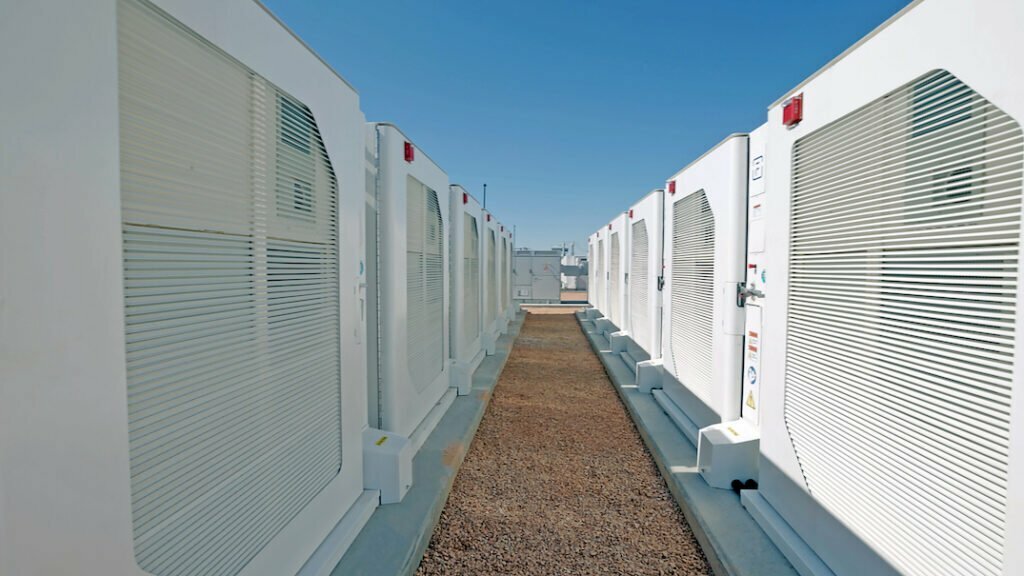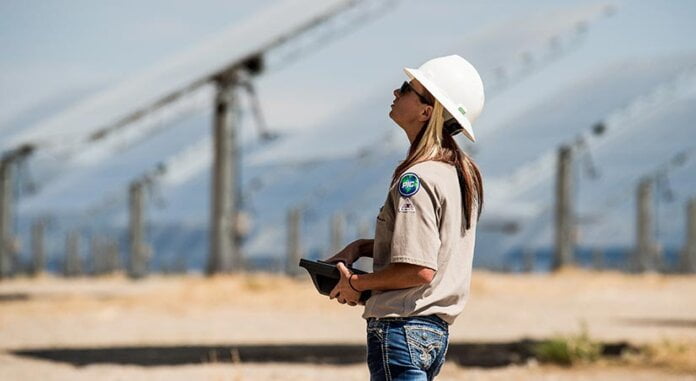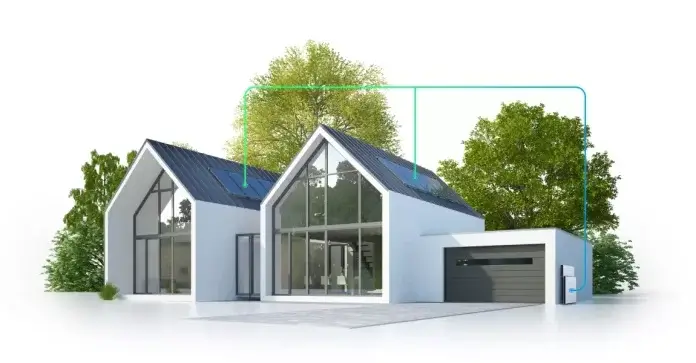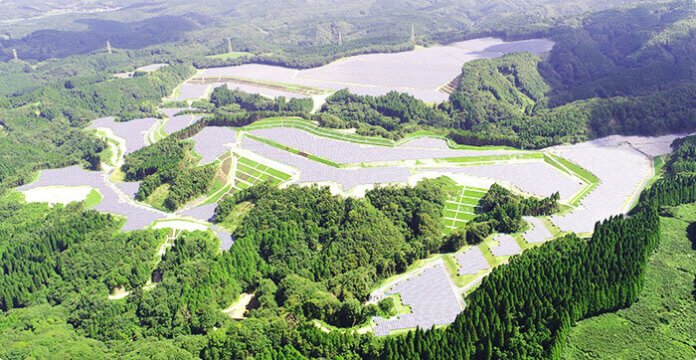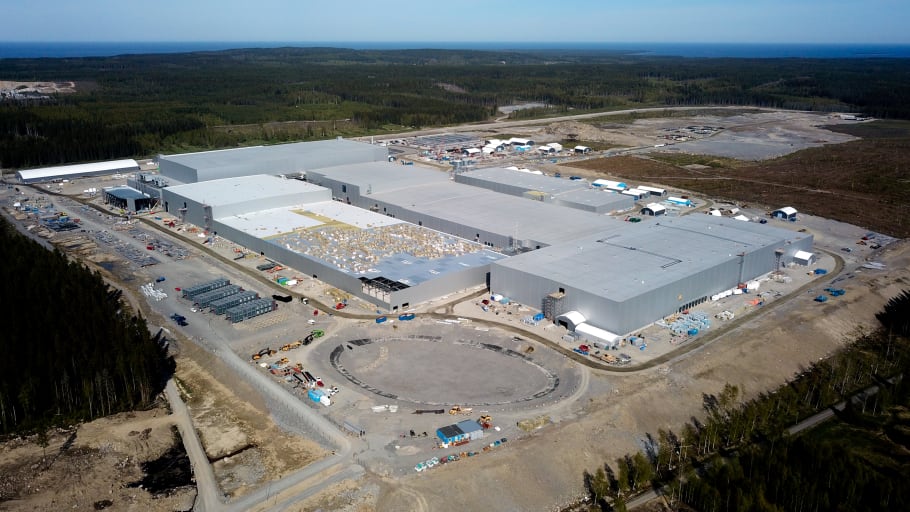Fluence said some extra costs were associated with the roll out of its sixth generation battery storage solution, the Fluence Cube, launched in 2020. Image: Fluence.
Fluence has reaffirmed its guidance of US$1.1 billion to US$1.3 billion revenues for the 2022 financial year, with the company’s CEO claiming expectations were exceeded in the first quarter “despite short-term headwinds”.
The energy storage technology and services provider said ongoing product shipping delays and temporary closures of customer sites are expected to be resolved sooner rather than later when issuing its Q1 2022 financial results this week.
It also highlighted that historically, a large portion of its customers’ projects come online in the peak summer months, subjecting its business to a seasonality which sees about 60% of its annual revenue recorded in the third and fourth quarters of the year.
In the company’s fiscal Q1 2022, which ended 31 December 2021, it recorded US$175 million revenues, which was a 50% increase on the same period of 2021.
It signed contracts for 600MW of energy storage products, a 525% increase from Q1 2021, which CEO Manuel Perez Dubuc said in a conference call to discuss results was in excess of expectations for what has historically been one of the quieter periods of the year as the company said revenues are on track for the full-year guidance offered back in December.
Fluence has also diversified into optimisation services for renewable energy as well as energy storage assets and added 250MW of contracts in the first quarter for its Fluence IQ automated bidding platform.
The 1.1GW Fluence IQ deal with AES Corporation reported this week and booked after the end of the quarter, meant targeted 2022 revenues for Fluence IQ contracts have already been achieved, the CEO pointed out.
The company floated its IPO in October last year, which raised just under a billion dollars and valued Fluence at US$4.7 billion, but meant it immediately paid back outstanding debts of about US$100 million and paid other associated costs of the transaction.
A net loss of US$111 million was recorded for the quarter, nearly 10 times Q1 2021’s US$12 million net loss and adjusted EBITDA US$-43 million, nearly four times the US$-11 million recorded in the same quarter of 2021.
Raw materials indices-based pricing to be introduced
Shipping delays and customer site closures resulting from the ongoing COVID-19 pandemic took their toll.
Chief financial officer Dennis Fehr said that US$41 million of non-recurring expenses were incurred during the quarter, which included US$31.3 million from project charges and other costs attributable to the pandemic’s effects, as well as US$5.6 million excess shipping and other non-recurring costs.
Some of the other losses were due to the cost of rolling out Fluence’s sixth generation energy storage products, accounting for US$13 million costs, which Fehr said meant gross profits were negative.
The company also paid US$60 million in advance for battery equipment to secure supplies amid ongoing supply chain disruptions.
CEO Perez Dubuc noted that inflationary pressures and raw material price increases are a “concern for many in our industry,” although Fluence’s current backlog — US$1.9 billion as of 31 December 2021 including US$1.6 billion in energy storage orders and US$0.3 billion in recurring revenues from Fluence IQ and energy storage services — has been hedged by fixed price contracts signed with suppliers and customers, he said.
Future contracts will include pricing based on raw material indices (RMI), which could minimise exposure to fluctuations in future commodity prices.
The company also expects new production facilities to come online through contract manufacturers in North America in the fourth quarter of the company’s fiscal year, and in Europe in Q1 2023.
It held cash and cash equivalents of US$632 million as of 31 December 2021 and expects to realise US$125 million of delayed revenue from Q4 fiscal 2020 within the first half of this fiscal year, but expects the total forecast for shipping and pandemic-related non-recurring expenses to be in the range of US$50 million to US$55 million.
In Energy-Storage.news’ recent Year in Review 2021 interview blog series, Manuel Perez Dubuc said that energy storage, like nearly every other industry, had been dealt severe challenges by COVID related to shipping costs.
“Global shipping delays are impacting anyone who wants to bring goods from Asia to the Americas or Europe. While we cannot predict the shipping markets, we’re seeing the situation start to stabilise in terms of price and reliability, and we expect it to normalise by Q4 of the 2022 calendar year,” he said, with Fluence considering it likely to be a “brief speed bump in the clean energy transition”.
Project sizes grow, along with available markets and applications
Fluence is seeing its orders from repeat customers grow in scale as well as number, Perez Dubuc said in the conference call, and the whole energy storage industry grows as sites are “becoming bigger and bigger because the technology has been understood and they (customers) really see the benefit”.
The CEO highlighted the example of a 200MW/200MWh order for four systems in Lithuania, which will help strengthen the transmission network and followed a successful 1MW pilot. In this way energy storage could be a vital tool to ease transmission network congestion and save money on infrastructure build out, with Perez Dubuc name checking Chile, Germany and Vietnam as perfect examples.
Chief product officer Rebecca Boll agreed that the transmission space is one the company sees opportunities begin to open up, as well as newer use cases like data centres.
Megawatt-hour durations of sales are also increasing independent power producers (IPPs) and utilities are increasingly replacing fossil fuel generation with energy storage and combining energy storage with renewables, Perez Dubuc said.
Growth is being seen in new geographic regions, Rebecca Boll added, citing the example of India, where Fluence recently announced a forthcoming joint venture (JV) with renewables company ReNew Power.
Not only do these new regions present new contract opportunities, but as with more established markets like California and Australia, they are expected to move over time from shorter to longer duration energy storage solutions, Boll said, helping to grow the total available market.
Conference call transcript by Seeking Alpha.
Continue reading


